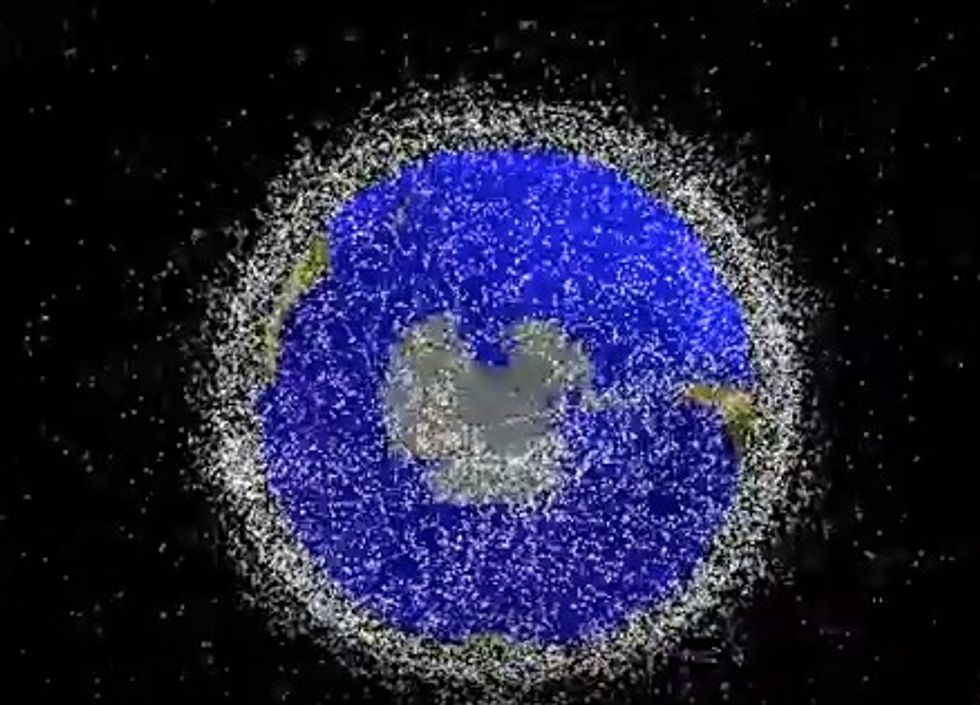
© 2025 Blaze Media LLC. All rights reserved.
Scientists Identify a Piece of Space Debris That Will Hit Earth Next Month: 'The Show Will Still Be Spectacular
October 26, 2015
WT1190F, a less than 7-foot-wide piece of junk, is soaring through space straight toward Earth with a meet-up scheduled for November 13.
According to Nature News, this debris named "for an unprintable expression of bafflement," was considered "lost," as it was on the far side of the moon. When scientists spotted it earlier this month, they started paying closer attention and projected that the object will indeed enter Earth's atmosphere and likely fall into the Indian Ocean about 40 miles off the coast of Sri Lanka. Still, Nature reported that most will burn up in the atmosphere.
The European Space Agency said that while the object's "mass is not sufficient to cause any threat to the area, [...] the show will still be spectacular, since for a few seconds the object will become quite bright in the noon sky."
Richard Kowalski, senior research specialist with the Catalina Sky Survey at University of Arizona, Tucson, wrote in a Facebook post with a map projecting the area where the debris could hit that it was discovered on October 3 by Rose Matheny.
Catalina discovers a third impactor!Impactor WT1190F, almost certainly man-made, was discovered by Rose Matheny on...
Posted by Richard A. Kowalski on Thursday, October 22, 2015
Scientists plan to make the most of this opportunity. Here's more from the ESA on what they hope to gain from this event:
The goal is twofold; first, the object is interesting to better understand the re-entry of satellites and debris from high orbits. Second, it provides us with an ideal opportunity to test our readiness for any possible future events involving an asteroid, since the components of this scenario, from discovery to impact, are all very similar.
With its average density being about 10 percent water, the ESA said that it is likely manmade and not a space rock. Nature speculated that the debris could date back to the Apollo era.
Though WT1190F might not pose a danger there have been many different proposals over the years as to how to deal with the growing problem of space junk, which could pose a risk for astronauts in space and those on Earth as well.
According to NASA, there are over 500,000 pieces of debris tracked by the the agency and the Department of Defense as they travel at speeds up to 17,500 mph in Earth's orbit.
Watch this animation of space debris from NASA:
(H/T: Gizmodo)
Want to leave a tip?
We answer to you. Help keep our content free of advertisers and big tech censorship by leaving a tip today.
Want to join the conversation?
Already a subscriber?
more stories
Sign up for the Blaze newsletter
By signing up, you agree to our Privacy Policy and Terms of Use, and agree to receive content that may sometimes include advertisements. You may opt out at any time.
Related Content
© 2025 Blaze Media LLC. All rights reserved.
Get the stories that matter most delivered directly to your inbox.
By signing up, you agree to our Privacy Policy and Terms of Use, and agree to receive content that may sometimes include advertisements. You may opt out at any time.






